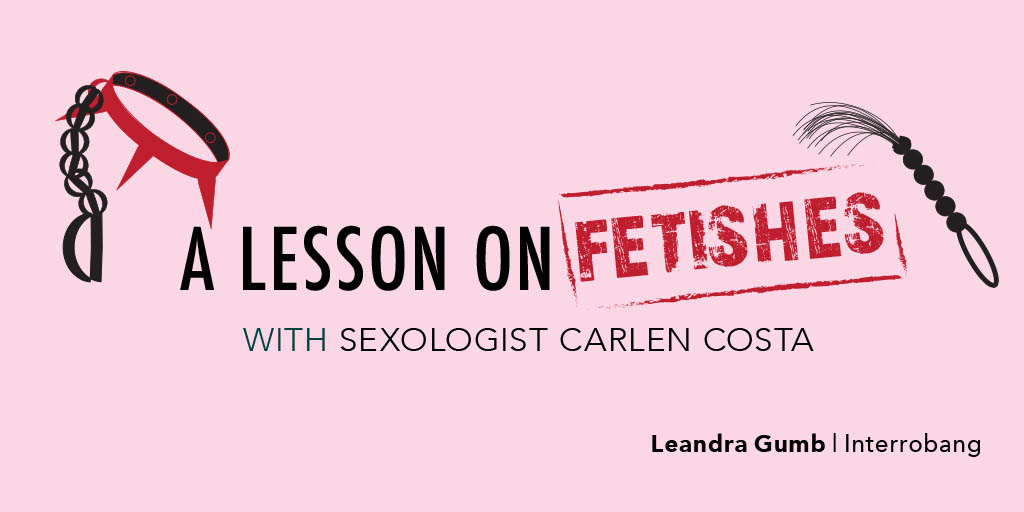A lesson on fetishes with sexologist Carlen Costa

Carlen Costa, a registered clinical doctor of sexology, has granted Interrobang readers with some answers to the mysterious world of fetishes. Fetishes are a big taboo in everyday conversation, but that doesn’t mean they’re something to be feared. Dr. Costa has sprinkled little bits of knowledge and advice for us about fetishes and how to approach them.
Leandra Gumb: What is your official title?
Carlen Costa: Carlen Costa, clinical doctor of sexology or sexologist, and OCSWSSW (Ontario College of Social Workers and Social Service Workers) psychotherapist.
L.G: What are fetishes?
C.C: Fetishes, in the simplest sense, are various expressions of sexual interests. It covers a broad range of sexual and gender identity, and expression in its purest form.
L.G: What are the different types of fetishes?
C.C: It’s about worshipping or seeking gratification from a sexual expression that is considered abnormal. But the interesting part about sexuality though is, what is normal? Who defines that? When we’re looking at and thinking of the idea of different categories of fetishes or what is a fetish, it’s about looking at what is your baseline for normal.
You can categorize fetishism into the eroticism of objects, or inanimate objects, items of clothing, or parts of the body. It’s kind of how you can break it down. You can look at scatophila, or urophila, or lactophilia which are about poop, urine and breast milk. Those are all about body fluids. You can look at hair fetishes or muscle worship as fetishes. You can look at shoe fetishes and underwear fetishes which is more about clothing. Then you can also go into sexual acts that are also fetishes. Like erotic fixation for example, electrostimulation as well. It’s kind of like the categories of life are the categories of fetish.
L.G: What do you think is the cause of the stigma around fetishes?
C.C: The stigma around fetish is that it’s seen as abnormal. People don’t like what they can’t understand. So when there is baseline of normalcy, anything outside of that makes people feel really uncomfortable. Whether that’s the theory of a movement, whether it’s sexual fetish, or different relationship styles, if it doesn’t fit into the heteronormative vanilla sex, people generally think that it’s weird. But it’s not.
L.G: Do you have any advice for people who are interested in trying out or exploring fetishes?
C.C: If you’re looking at exploring your own personal fetishes or to see if you have interests in a different type of fetish or sexual expression it’s all about doing your research and learning how to practise safely. Then it’s about executing slowly. If you’re into foot fetishes for example, you want to make sure that you’re not going to hurt anybody.
Find out what are proper worshipping practices, what feels good for you, what feels good for the other person. Consent is one of the requirements for jumping into discovering your fetish. If you aren’t hurting yourself or other people, then it’s okay. Consent is a big part of fetish discovering.
Don’t be afraid if that is something that turns you on because so many people become afraid of what turns them on and then they go into a repressive mindset. It can hurt you more than seeking to discover what that attraction is about.
L.G: Do you have anything else you’d like people to know about fetishes?
C.C: It’s okay to discover yourself and it’s okay to discover your pleasure. Especially when you’re young and your hormones are raging and everything looks sexy and juicy, don’t be afraid of what it means about who you are. You are not defined by that. Don’t feel limited to the definitions that the world puts on you.
For more information on fetish culture, contact Carlen Costa at her website carlencosta.com.














